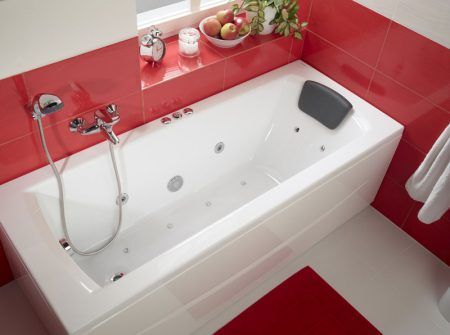Brass and stainless steel - excellent materials for the mixer, but this is not always pleases the consumer, because you need to choose just one. But knowing the properties of both alloys, it will be easier to make a decision.
Features stainless steel mixers
The content of the article
- Features stainless steel mixers
- Pluses and minuses of brass faucets
- Mixer what material is best
The major concerns of consumer characteristics usability, heat resistance, oxidation resistance, resistance to the influence of impact and chemicals, as well as hygiene, environmental friendliness and safety to humans and the environment environment. Such mixers may be stable for a long period of time without deterioration of its characteristics. They also highlighted the abolition of strength characteristics and resistance to wear.
Additional positive feature of these mixers - aesthetic appearance and a huge variety of designs, so you can select the model that will fit into any style of interior.
The downside of stainless steel products is their high price. But it is justified by first-class quality.
The second point can be called the existence of fakes on the market plumbing, indistinguishable to the naked eye. There are two main tests for authenticity. First, the stainless steel is never easy, so that its products can be determined by weight.
Reference. If the mixer is not heavy, so likely it is made of silumin - aluminum alloy and silicon. Externally, it is similar to stainless steel, but has a much worse performance parameters are less durable and more fragile.
Secondly, it has no magnetic properties, so the magnet will not be attracted.
Another disadvantage of stainless steel faucet is its softness, but because over time it can be covered with scratches, which will reduce its aesthetic qualities. Also, they are more susceptible to contamination than products made of other materials, so they have to be cleaned more often. However, the performance is not affected.
Pluses and minuses of brass faucets
Such products currently occupy the largest share of the plumbing market. They are used because of their reliability and durability, as well as durability and security against rust and lime deposits.
Initially, the metal has a beautiful light golden color, but it is not able to realize all the design ideas, therefore often applied to brass faucets additional coating imparts shine chromium, copper, silver or gold. In addition, chrome surface has antiseptic properties impeding proliferation of harmful bacteria.
Reference. There are also options plated with nickel. In contrast to the mirror chrome, they are opaque, and therefore, they are invisible fingerprints, which can spoil the appearance. If you want the mixer "bronze", you can choose a model with applied on the surface of special epoxy resin and enamel. But such coverage has drawbacks: it is easily chipped off and covered with scratches.
As in the case of stainless steel, these products are not too cheap, but here the quality justifies the price. The second disadvantage is that the two brass mixer may have different chemical compositions (ie, percentages of certain components), because of which will have different technological properties. So if you do not understand in metals, the purchase will almost blindly.
Mixer what material is best
As you can see, both metals exhibit excellent performance: they are strong, practical to use, wear-resistant and have a long performance, and also can endure harsh temperature jumps, the effect of chemically active substances (e.g., detergents) and oxidation processes.
Both mixer has a aesthetic appearance and hygienic. And both have a relatively high cost. But if in the case of stainless steel, you can get a product with poor handling properties only if stumble on a fake, then you run the risk of not even made a mistake when buying a brass mixer metal.
Another difference between these products is different views on the plumbing market. Despite the fact that both types of mixers there are many varieties (including in terms of design), it is much more common brass model. Their you can meet more often, which is a certain share of the convenience in the selection.
Thus, the differences in materials is not too much, so the choice is yours. If you are afraid to make a mistake - stop for stainless steel, its quality check easier. If you want something reliable and durable, and time for testing and no choice of alternatives - much easier to buy a brass faucet.


